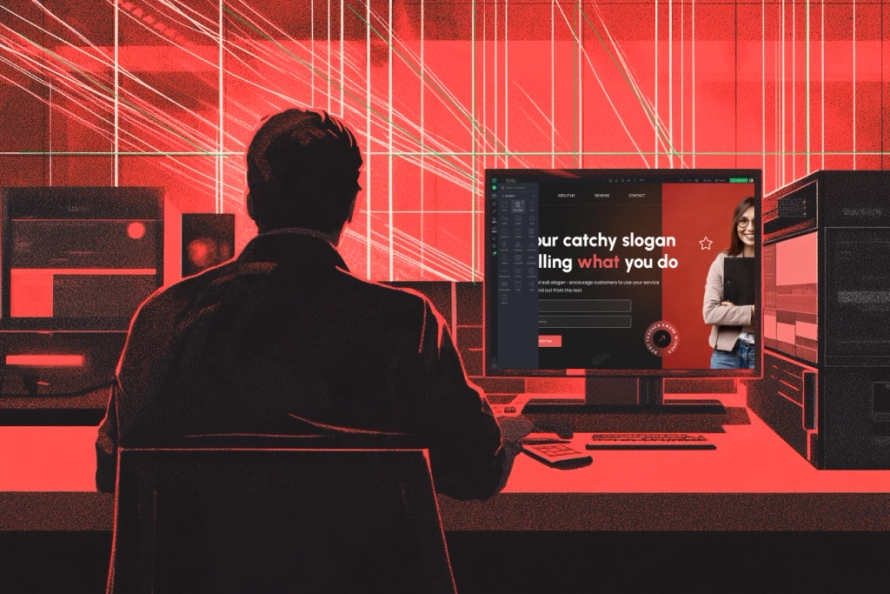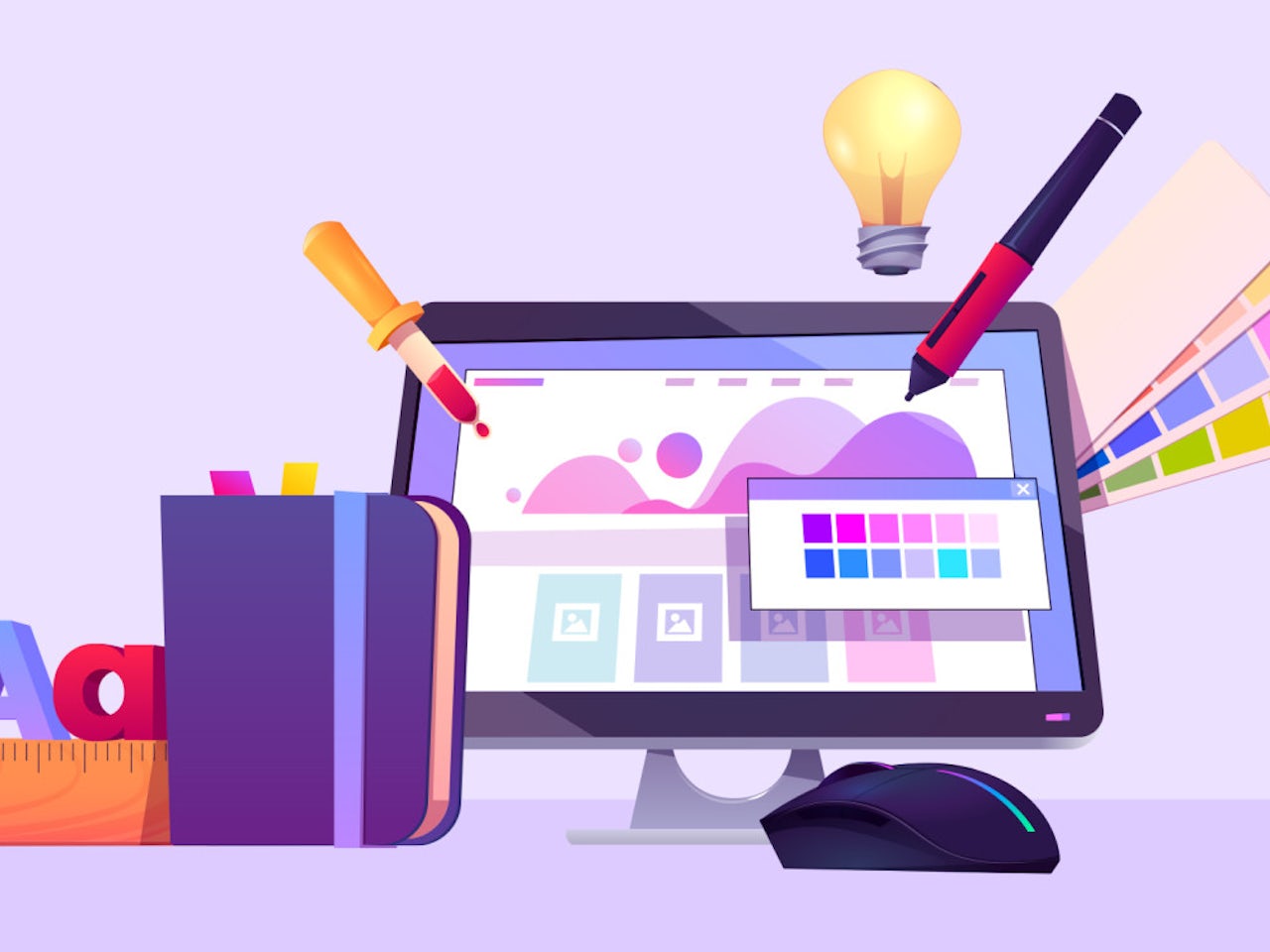Just How to Effectively Integrate Looks and Performance in Website Design
When creating a web site, you need to strike an equilibrium between appearances and functionality. It's not just about looking excellent; your design needs to also offer an objective and guide users effectively. By focusing on simpleness and intuitive navigating, you can produce an engaging experience. Yet what aspects genuinely improve usability while maintaining visual allure? Allow's discover the crucial concepts that can bring about an unified blend of elegance and function.
Comprehending the Significance of Aesthetic Appeals and Performance
Comprehending the balance between looks and functionality is vital for developing a reliable individual experience when you create a site. A visually appealing website grabs attention, yet it's the performance that keeps customers engaged. If your site looks great yet is challenging to browse, site visitors will quickly shed rate of interest and leave.Consider your target market and what attracts them in. You desire to create a style that reflects your brand while ensuring convenience of use. Structured designs, intuitive navigating, and clear phone calls to activity can improve both aesthetic appeals and capability.

Concepts of Efficient Web Layout
To produce an effective website design, you need to comply with numerous crucial principles that improve both individual experience and visual allure. Prioritize simplicity; a clean format aids individuals navigate quickly. Use a regular color pattern and typography to preserve comprehensibility across your site. This cultivates experience and trust.Next, assure your style is receptive. Users gain access to websites on different tools, so your design must adjust effortlessly. Take notice of visual power structure; highlight essential components with positioning, dimension, or color to direct customers' focus.Finally, incorporate adequate white room. It avoids mess and makes web content more digestible. Keep in mind, reliable web style balances visual appeals and functionality, so every layout selection must offer a function. By complying with these principles, you'll produce a website that's not just aesthetically enticing yet additionally straightforward, ultimately keeping visitors engaged and encouraging them to return.
Prioritizing User Experience
When prioritizing user experience, you'll want to begin by recognizing what your customers absolutely require. Streamlining navigating layout can make a huge distinction in just how easily they discover what they're seeking. Boosting visual pecking order aids guide their interest to the most vital components on your site.
Understanding Customer Requirements
Comprehending user demands is important for creating an interesting web experience that keeps site visitors returning. To accomplish this, you have to identify the objectives and preferences of your target audience. Start by conducting user study, like meetings or studies, to gather insights on what customers value most. When connecting with comparable sites, pay focus to their discomfort factors and difficulties. This info enables you to tailor your design, making sure performance lines up with customer expectations. Furthermore, consider producing individual personas that represent different segments of your target market, aiding you picture their requirements throughout the layout procedure. When you prioritize recognizing customer requirements, you develop an internet site that not just looks wonderful however also delivers a seamless, delightful experience that cultivates commitment.
Simplifying Navigation Layout

Enhancing Aesthetic Power Structure
A solid visual pecking order is important in guiding customers with your site and ensuring they involve with key material. To achieve this, utilize spacing, color, and size strategically. Make important elements like headings larger and bolder than body message, drawing attention immediately. Make use of contrasting colors to highlight contact us to action, urging clicks. Furthermore, utilize adequate white space to different sections, making content absorbable and inviting.Consider the flow of details; prepare elements logically, leading customers' eyes from one indicate the next. Usage visual hints, like arrows or lines, to guide focus. By prioritizing aesthetic hierarchy, you enhance customer experience and boost the chance of conversions, guaranteeing your web site is both cosmetically pleasing and functionally reliable.
Shade Theory and Its Effect On Functionality
While choosing the appropriate shades for your site might feel like a minor information, it considerably influences use and individual experience. Color influences just how users view details and can boost or impede navigation. As an example, contrasting shades can assist important aspects stick out, making it much easier for site visitors to locate what they need.Additionally, consider the psychology of colors: blue often influences trust, while red creates urgency. Knowing your target audience can lead your shade choices, guaranteeing they resonate well.Moreover, regular shade plans help build brand name identification, making your internet site much more unforgettable. Nevertheless, beware-- way too many colors can overwhelm customers. Adhere to a limited combination that matches your web content and keeps clarity.Incorporating accessibility is additionally vital; verify your shade combinations are friendly for those with aesthetic impairments. By thoughtfully using shade theory, you'll improve usability and create a more interesting customer experience.
Typography: Harmonizing Style and Readability
Shade selections set the stage for your website, yet typography plays an equally essential function in boosting user experience. You desire your message to communicate plainly while additionally mirroring your brand's personality. Beginning by selecting fonts that are not just attractive but additionally clear. Sans-serif font styles often work well for electronic displays, as they're easier to review at various sizes.Maintain a pecking order by making use of different typeface sizes and weights; this guides customers through your material effortlessly. Consider line spacing and letter spacing; as well limited can irritate viewers, while also loose can interrupt the flow. Restriction your typeface options to two or three to maintain the design cohesive.Finally, constantly check your typography across various tools and browsers. What looks great on one display may not on another. Balancing style with readability guarantees that your message reverberates, keeping your audience notified and involved.
Responsive Style: Making Appearances Deal With All Gadgets
To ensure your website looks wonderful on any kind of tool, you'll require to embrace responsive layout concepts. This strategy warranties your site adapts to different screen dimensions, supplying an excellent individual experience. Begin by utilizing liquid grids and flexible pictures that scale effortlessly. As opposed to dealt with measurements, opt for percents and loved one devices, enabling your format to readjust dynamically.Next, check here execute media questions in your CSS. These let you apply various styles based upon device characteristics, like screen size. By doing this, you can maintain aesthetic appeal while guaranteeing functionality.Don' t forget touch targets; make certain buttons and web links are easy to touch on smaller displays. Focus on crucial material, so customers can easily navigate your site despite their gadget. By focusing on these components, you'll create an interesting, aesthetically appealing experience that satisfies the requirements of all customers, whether they get on a smart device, desktop, or tablet .
Conducting Use Screening for Constant Improvement
To boost your web layout, you need to establish clear functionality goals that straighten with user requirements. By performing individual examinations, you can gather valuable comments on exactly how real individuals interact with your website. Evaluating these results will assist you make educated improvements and create an extra reliable customer experience.
Defining Use Goals
While looks can draw customers in, specifying functionality goals is important for ensuring their experience continues to be seamless and satisfying. Beginning by recognizing what you desire individuals to attain on your site (website design london Ontario). Consider their behaviors, needs, and jobs. Are they searching for information, buying, or registering for an e-newsletter? Establish clear standards to gauge success, like job conclusion prices or time on job. Focus on intuitive navigation, obtainable web content, and responsive design to improve usability. On a regular basis review these goals as user expectations develop. By specifying functionality objectives, you produce a structure for examining and boosting your site's efficiency. This concentrate on functionality not only enhances customer fulfillment however likewise enhances the overall efficiency of your design
Carrying Out Individual Tests
Conducting user tests is crucial for fine-tuning your site and ensuring it meets your audience's requirements. Start by identifying your target individuals and creating an examination strategy that outlines your objectives. Make use of a mix of qualitative and measurable techniques, such as studies, interviews, and task-based monitorings, to gather comprehensive comments. Invite participants to browse your website while you observe their communications and keep in mind any kind of troubles they encounter. Motivate open discussion to capture their ideas and sensations concerning the layout and capability. Keep sessions brief and concentrated, guaranteeing you cover vital locations without frustrating customers. Make sure to document all searchings for, as this details will be important for making enlightened style choices that boost both visual appeals and functionality.
Evaluating Examination Outcomes
Just how can you properly assess the results of your use tests to drive continuous enhancement? Beginning by classifying comments right into usual styles. Look for patterns in customer actions that highlight pain points or areas for enhancement. Usage measurable data, like task completion prices and time on job, to measure use objectively. Do not fail to remember to take into consideration qualitative insights from customer comments; they usually expose underlying concerns that numbers can't show. Focus on one of the most impactful findings and develop actionable things for your design team. Remember, it's concerning repeating-- execute adjustments, then test once again. This cycle of screening, examining, and refining aids you balance looks and functionality, ensuring your web site fulfills user needs efficiently while maintaining visual charm.
Regularly Asked Inquiries
How Do I Choose the Right Color Combination for My Website?
To pick the right color palette for your site, consider your brand's character, target market, and psychological influence (website design london Ontario). Usage shade psychology, develop consistency, and warranty readability. Examination mixes to see what reverberates ideal with site visitors
What Devices Can Aid With Website Design Looks and Performance?
You can make use of devices like Adobe XD, Figma, and Lay out to improve your internet style's looks and performance. These platforms use user-friendly interfaces, partnership features, and pre-made design templates to enhance your innovative process and improve your designs.
How Can I Incorporate Animations Without Endangering Capability?
To include computer animations without endangering performance, prioritize subtle effects that enhance customer experience. Use CSS animations for smoother communications, warranty quick load times, and examination on different devices to keep efficiency while adding aesthetic charm.
What Are Typical Mistakes to Stay Clear Of in Website Design Aesthetics?
When making, prevent cluttered formats, bad color selections, and inconsistent typefaces. Do not overlook mobile responsiveness, as it can estrange individuals. Confirm your style aligns with your brand name, producing a seamless experience that involves visitors efficiently.
How Often Should I Update My Internet site's Style for Ideal Looks?
You ought to upgrade your website's layout every 1-2 years to stay up to date with patterns and maintain suitable visual appeals. Routinely restoring visuals helps involve site visitors and guarantees your site stays straightforward and enticing. When you create a website, comprehending the equilibrium between looks and functionality is vital for developing an effective user experience. To produce a reliable web design, you need to stick to several essential concepts that boost both customer experience and visual charm. Customers access sites on numerous devices, so your design must adjust seamlessly. When prioritizing individual experience, you'll desire to begin by understanding what your individuals absolutely need. Begin by performing user study, like surveys or interviews, to collect insights on what customers worth most.